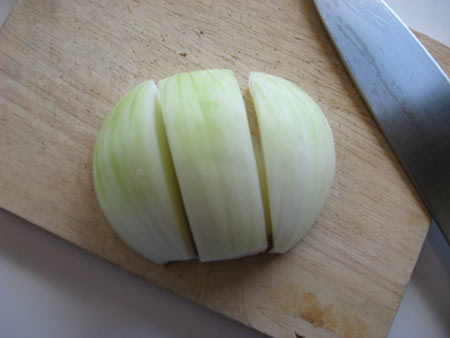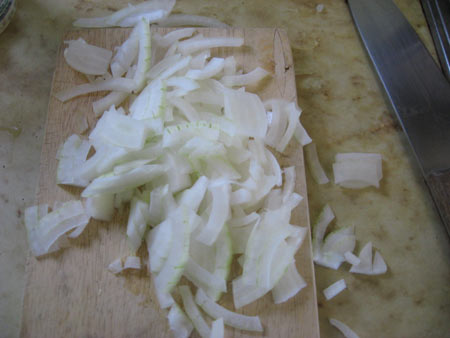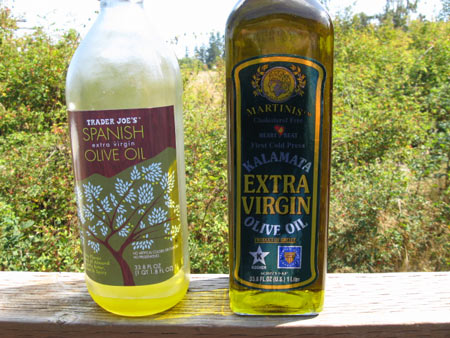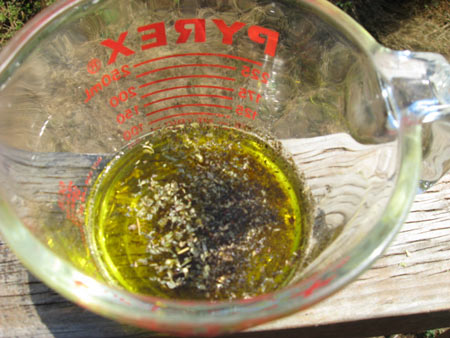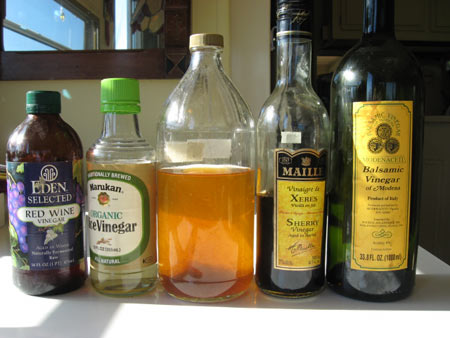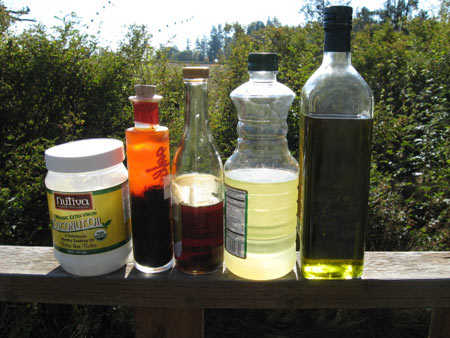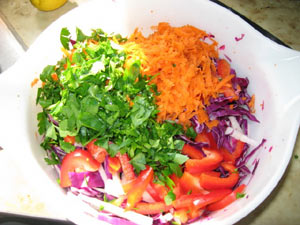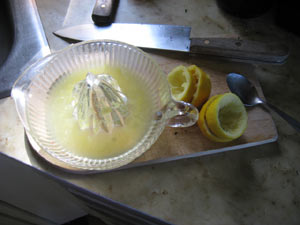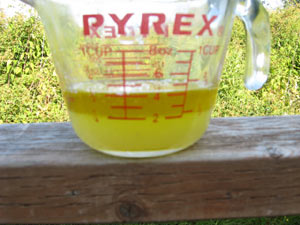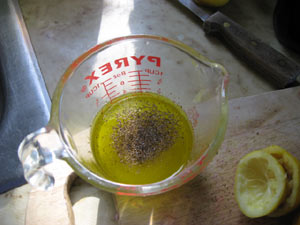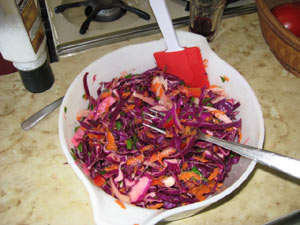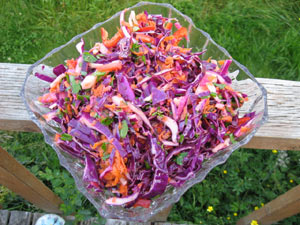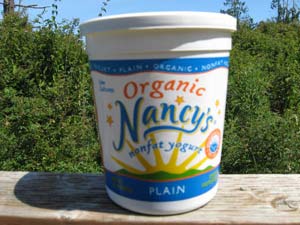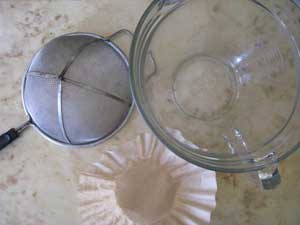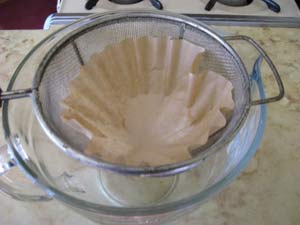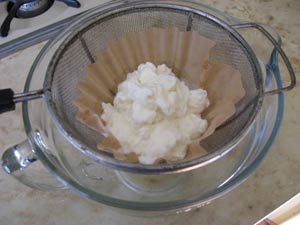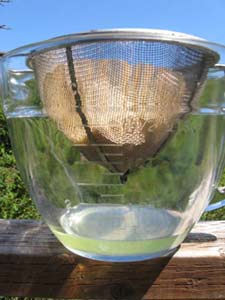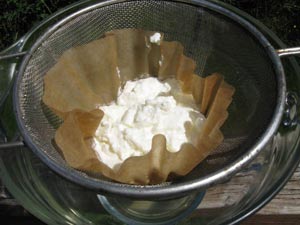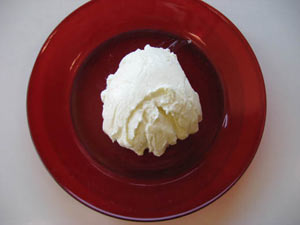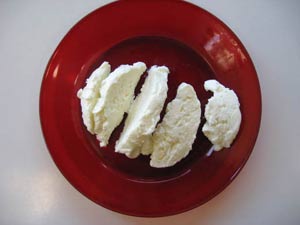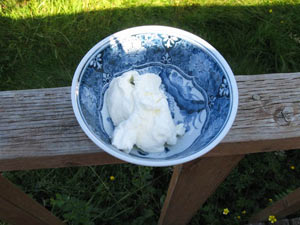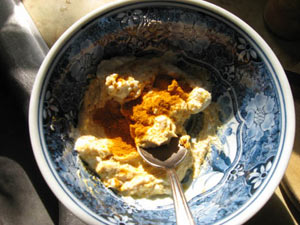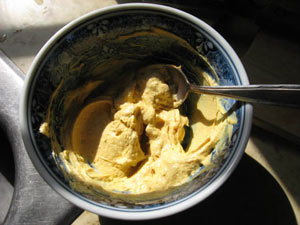I’d better hurry up and post this before the Walla Walla Sweet Onion season is done. These are the large sweet, white onions grown in Washington State that have been available for the past couple of months. I’ve made this salad for 4 potlucks in the last month and it has been a smash hit at every one, partly because it’s so unusual. Any sweet onion will do and this dish is drop-dead simple to make.
For a large bowl, potluck size, you start with a couple of onions. Notice the larger one is really big. If you’re making this for yourself, start with a single, smaller onion. 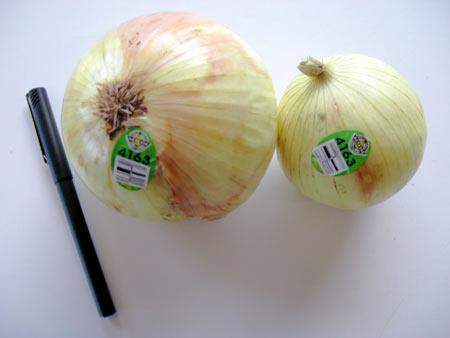
Peel and chop the onion. If you do a large or medium dice (these photos are mediumish) it’s a salad. If you chop everything finely it’s still a salad, but because it has a relish-like consistency you can serve it with crackers as an hors d’oeuvre. Great for a “finger food” event.
(You will note that I was not Mrs. Blair’s star pupil in 8th grade Home Economics in the “uniformly diced vegetables” department.)
Put the onions in a largish bowl.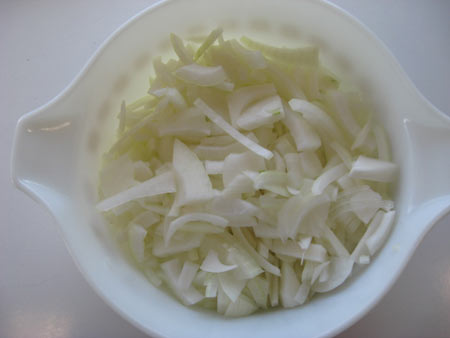
This is the first time I’ll mention bowl size but it won’t be the last. Always mix or prepare your food in a BIG bowl, much larger than the volume of the food you’re preparing. You do this because you need room to toss and mix the ingredients without them flying all over the counter and floor. This bowl is just under half-full.
Then you add crumbled feta cheese. 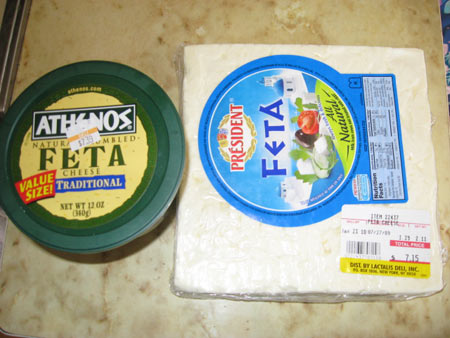
I have to say that buying the one on the left killed me because it cost $9.85 per pound (and it was the cheapest feta at my local large grocery) versus the $3.39 per pound for the one on the right from Costco. Almost 3 TIMES AS MUCH, but the first of these potlucks was a very special occasion and I needed it right then and the nearest Costco is 45 minutes away if I go a little, a tad, maybe 10% or 15% over the speed limit in the non-speed trap stretches.
Crumble the feta with a fork and add to the onions.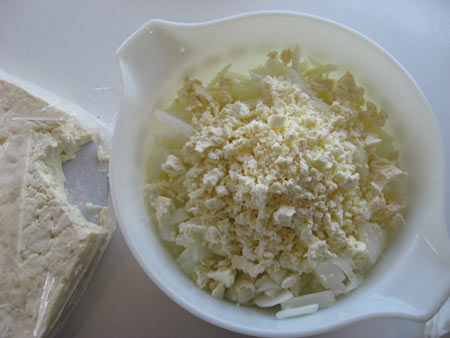
You can see that I fork-nibbled the corner of that 2+ pound block. By the time I was done I used about 8 ounces or half a pound for the amount of onions I had (those two you saw above). I determine how much feta to add by tossing it evenly and looking at it. It should look roughly like this in terms of proportions.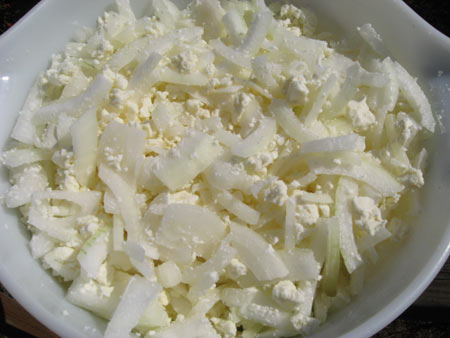
Then it’s time to make the dressing . . . once again, a vinaigrette. We start with a good extra virgin olive oil, or two in this case. I finished up the one on the left and opened the one on the right. The Spanish one on the left is lighter partly because I store it in the refrigerator once it’s open to keep it fresh, partly because it’s a lighter green oil.
And here’s one of the few times I use white vinegar for food. The onions are white, the cheese is white and I want the salad to stay that way so I add white vinegar.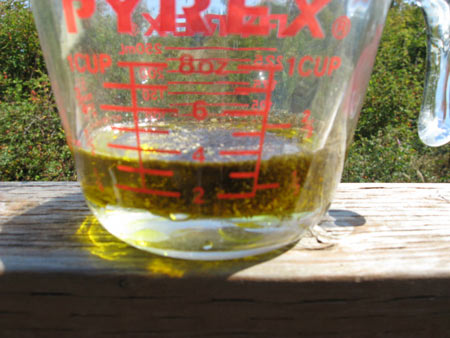
I often use a measuring cup to mix my vinaigrettes but I don’t use it to measure. Instead, I use it to eyeball the proportions. This is about 3 parts oil to one part vinegar.
Add some dried basil and dried oregano which you’ve rolled in the palm of your hand to break it smaller and release fresh flavor.
Those of you with acute perception will notice an oddity about the last two pictures and I’m not telling you what it is. Comment when you figure it out.
You don’t need to add salt. The salt of the feta is the perfect complement to the sweet, yet a-little-bit-bitey onion.
Toss the dressing with the onions and feta.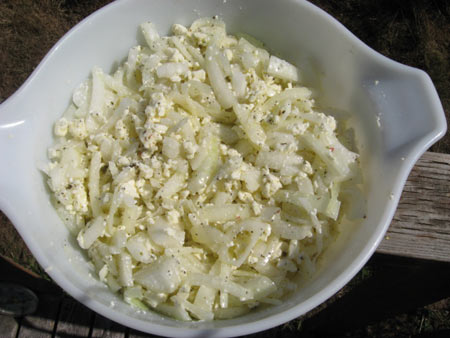
Let it rest for at least 4 to 8 hours. Overnight is too much. This salad wants to be made in the morning and served that evening. Somehow, that’s the perfect amount of time for the vinegar to work its magic on the onion.
When you serve it, put it into a pretty bowl.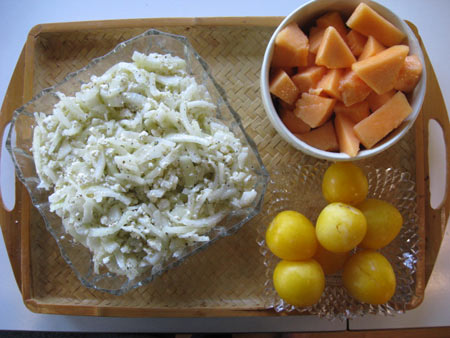
This particular tray went with me to a Blessings which always starts with a 5:30 potluck. Our spiritual work starts at 7:00 and goes until it’s time to stop, usually by 9:00. The cantaloup is a tiny, sweet variety grown by one of the island farmers. The plums are dead ripe, juicy and sweet. They would never make it to a grocery store because their ripeness cycle is short and perishable. I had picked them from a friend’s tree the day before.
My wish for you is that you are blessed with an abundance of good food and that you gather with your friends and family and neighbors to share it.

